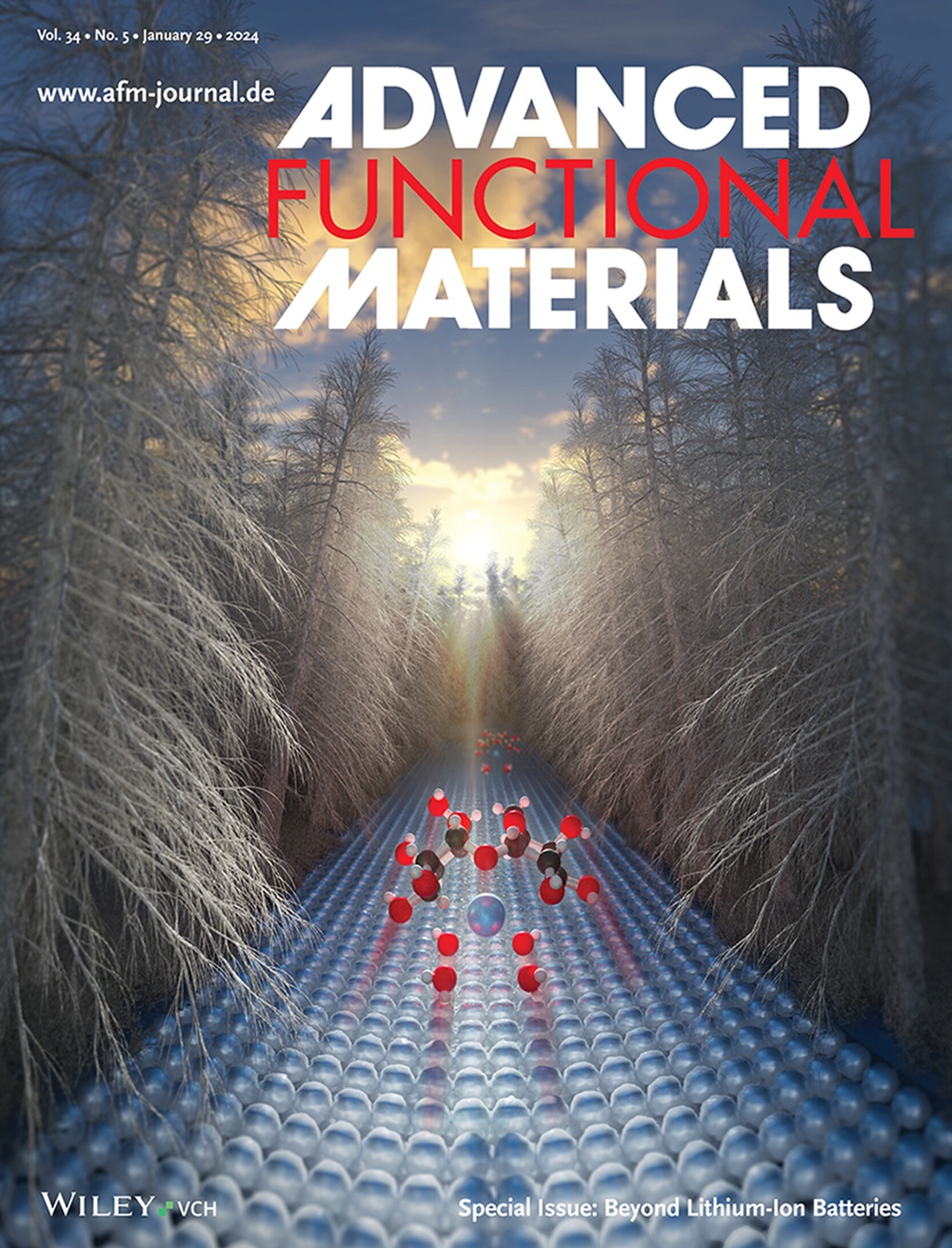The Electron-Rich Interface Regulated MBene by S-Bridge Guided to Enhance Nitrogen Fixation under Environmental Conditions
IF 18.5
1区 材料科学
Q1 CHEMISTRY, MULTIDISCIPLINARY
引用次数: 0
Abstract
The underutilization of active sites limits the performance enhancement of 2D transition metal boride (MBene) in electrocatalytic nitrogen reduction reaction (NRR). Herein, a highly efficient NRR electrocatalyst with S atoms bridging Fe and Mo atoms on the surface of MBene is successfully constructed by using an active site electron optimization strategy, which increases the charge density around the Mo active site and enhances the activation ability of the catalyst to N2 molecules. It is noteworthy that FeS2-MBene demonstrates a low intrinsic potential for NRR (−0.2 V vs RHE). It is more favorable for the adsorption of nitrogen atoms in comparison to hydrogen atoms, thereby it can effectively inhibit the hydrogen evolution reaction (HER). Under a potential of −0.2 V versus RHE, the ammonia yield rate is 37.13 ± 1.31 µg h−1 mg−1, and the FE is 55.97 ± 2.63%. Density functional theory (DFT) calculations demonstrate that Mo on the surface of MBene serves as a site for the adsorption of N2. The formation of the heterostructure enhances electron transfer, resulting in the Mo active site becoming an electron-rich state in favor of subsequent hydrogenation steps. This work offers significant insights into the design and utilization of 2D MBene-based catalysts in NRR.

S 桥引导的富电子界面调控 MBene 在环境条件下增强固氮作用
活性位点利用不足限制了二维过渡金属硼化物(MBene)在电催化氮还原反应(NRR)中的性能提升。本文通过活性位点电子优化策略,成功构建了一种高效的氮还原电催化剂,其S原子桥接了MBene表面的Fe和Mo原子,增加了Mo活性位点周围的电荷密度,增强了催化剂对N2分子的活化能力。值得注意的是,FeS2-MBene 显示出较低的 NRR 本征电位(-0.2 V vs RHE)。与氢原子相比,它更有利于吸附氮原子,因此能有效抑制氢进化反应(HER)。在相对于 RHE 的 -0.2 V 电位下,氨的产率为 37.13 ± 1.31 µg h-1 mg-1,FE 为 55.97 ± 2.63%。密度泛函理论(DFT)计算表明,MBene 表面的 Mo 是 N2 的吸附位点。异质结构的形成增强了电子传递,导致钼活性位点成为富电子状态,有利于后续的氢化步骤。这项研究为在非还原反应中设计和利用二维 MBene 催化剂提供了重要启示。
本文章由计算机程序翻译,如有差异,请以英文原文为准。
求助全文
约1分钟内获得全文
求助全文
来源期刊

Advanced Functional Materials
工程技术-材料科学:综合
CiteScore
29.50
自引率
4.20%
发文量
2086
审稿时长
2.1 months
期刊介绍:
Firmly established as a top-tier materials science journal, Advanced Functional Materials reports breakthrough research in all aspects of materials science, including nanotechnology, chemistry, physics, and biology every week.
Advanced Functional Materials is known for its rapid and fair peer review, quality content, and high impact, making it the first choice of the international materials science community.
 求助内容:
求助内容: 应助结果提醒方式:
应助结果提醒方式:


